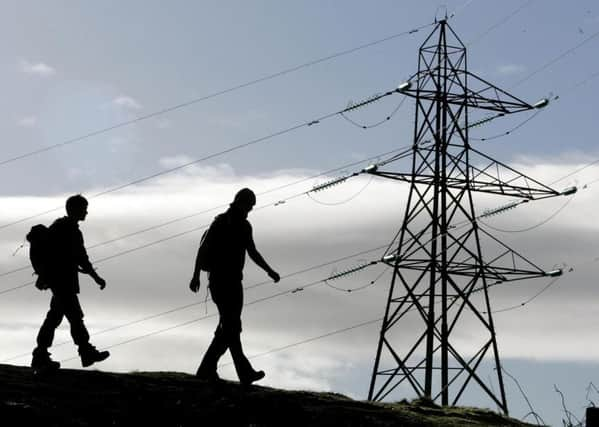Final phase of Cairngorms pylon removal gets underway


The final phase, which involves dismantling 84 towers between Aviemore and Kingussie, was ceremoniously marked on Friday with the toppling of the first pylon.
The removal of dud pylons from the Cairngorms is just one part of a £600m energy project created to upgrade the 137-mile Beauly-Denny power line.
Advertisement
Hide AdAdvertisement
Hide Ad600 replacement towers have already been built on the line, which is 200 fewer than before. All in all, over 300 towers in the national park will be taken away.
New underground distribution cables have also been installed between Aviemore and Kingussie to replace some of the overhead cables.
The initial phase began in 2011 just east of Boat of Garten. The Aviemore to Kingussie section is expected to be finished by July this year.
Former chairman of SSE and current chairman of the Green Investment Bank, Lord Smith of Kelvin, underlined the importance of the project: “When I look back at my time with SSE, in what is an ever changing energy sector, Beauly-Denny was one of the few constants - not least because of the long-term nature of the project and the lengthy planning process it went through.
“Following its successful energisation back in November 2015, it is important to recognise the enormous contribution the line has made to Scotland’s thriving renewable energy sector.
“It was the first, vital piece of a jigsaw that is still coming together today, unlocking Scotland’s vast renewable potential that has recently seen the installed capacity of renewables supported by the north of Scotland transmission network rise to over 4,500 megawatts of generation capacity.
“That’s a truly remarkable achievement which is contributing in no small part to national and local climate change and renewable energy targets, as well as helping to maintain security of electricity supply.”
Calls by campaigners demanding that the entire line be buried underground and hidden from site were rejected by SSE due to the high costs involved.
At over 200ft, many of the new pylons are taller than those they replaced.